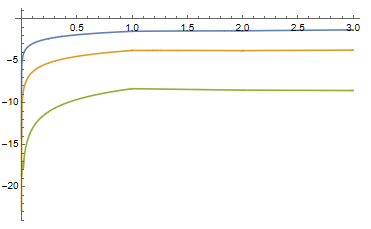If $a$ is rational, then the root, say $x_*$, of your equation is algebraic, and (say) Mathematica will find for you with any degree of accuracy. Otherwise, one can approximate $a$ by rational numbers.
Another way to get bounds on $x_*$ is to use a combination of the Newton and secant methods to bracket the root, as follows. For $a\in(0,1)$, using the substitution $u=x^a$, rewrite your equation as \begin{equation} f(u):=u^{1/a}+u=y, \tag{1} \end{equation} so that the function $f$ is convex and increasing. Let $u_*$ be the positive root of equation (1), so that $x_*=u_*^{1/a}$ and $f(u_*)=y$.
Note that \begin{equation} u_*\vee u_*^{1/a}<y=f(u_*)<2(u_*\vee u_*^{1/a}), \end{equation} where $u\vee v:=\max(u,v)$ and $u\wedge v:=\min(u,v)$. So, letting \begin{equation} u_0:=u_0(y):=\frac y2\wedge\Big(\frac y2\Big)^a,\quad v_0:=v_0(y):=y\wedge y^a, \end{equation} we get the initial bracketing of $u_*$: \begin{equation} u_0<u_*<v_0. \end{equation} Use now the following combination of the secant and Newton methods for every natural $n$: \begin{equation} u_n:=u_n(y):=U(u_{n-1},v_{n-1}),\quad v_n:=v_n(y):=V(v_{n-1}), \end{equation} where \begin{equation} U(u,v):=u+\frac{y-f(u)}{f(v)-f(u)}\,(v-u), \end{equation} \begin{equation} V(v):=v-\frac{f(v)-y}{f'(v)}. \end{equation} Then $u_n$ and $v_n$ bracket the root $u_*$ and monotonically converge to it (very fast): \begin{equation} u_{n-1}<u_n<u_*<v_n<v_{n-1},\quad u_n\uparrow u_*,\quad v_n\downarrow u_*. \end{equation}
The bracketing $u_*\in[u_1,v_1]$ can be already pretty good, while providing almost digestible explicit lower and upper bounds on $u_*$.
As an illustration, here are the graphs $\{(y,\log_{10}(v_n(y)-u_n(y)))\colon0<y<3\}$ for $a=7/10$ with $n=1$ (blue), $n=2$ (orange), and $n=3$ (green):

